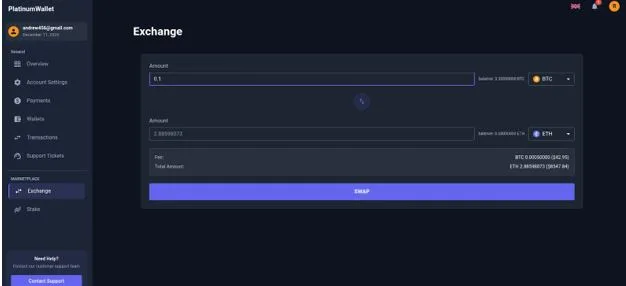How Salon Management Software Is Transforming the Beauty Industry
The beauty world is very busy. Using just a pen, phone, and paper is not enough anymore. Using computer tools is not just a good idea. It is something you need to do. Salon software is changing how salons work. It helps them talk to customers and make more money. This article will show how this software is changing the beauty business. It will explain what salon owners must know. It will also show how to pick the best tools to help a salon grow.
The state of play: Why the beauty industry is ripe for disruption
The beauty and wellness industry is changing very fast. It is quickly using new technology.
A recent article from Forbes explains that technology is helping the beauty industry grow. It is making things more efficient. It helps give customers a personal experience. It also helps businesses use information to make good choices.
But many salons still use many different tools. They use one app for appointments. They use a different app for money. They use paper charts for supplies. They make work schedules by hand. This messy system causes problems. It is not efficient. It leads to mistakes. It causes the salon to lose money.
This is why salons need automation tools. These tools put all the work into one system. This helps the business do more than just beauty services. It helps the business grow.
What Salon Management Software Actually Does
The main point of salon management software is simple. It gives you one computer system to run your daily business.
This system often has these important parts:
- Appointment Scheduling
- Lets clients book their own appointments online.
- They can also change, cancel, or get reminder messages.
- Client Management
- Saves each client’s past visits.
- Stores their likes and important notes.
- Payments and Checkout
- A system for charging clients.
- It handles all types of payments and deposits.
- Product Tracking
- Keep track of how many products you have.
- Tells you when to order more.
- Staff Scheduling
- Helps make work schedules for your team.
- Assigns stylists, rooms, and equipment.
- Reports and Analytics
- Shows you how much money you are making.
- Tracks how busy you are and finds patterns.
- Marketing and Loyalty
- Sends automatic emails or text messages to clients.
- Manages referral rewards and membership programs.
All of these parts work together in one system. Information moves smoothly between them. This is the big difference between a messy, manual way of working and one simple, organized system.
Real Impacts: How Software Reshapes Salon Operations
This is how the theory works in a real salon. Here is what the software actually lets you do.
Reduced no-shows and better capacity use
The software sends automatic text or email reminders to clients. This helps them remember their appointments. Many salons see 20 to 40 percent fewer people missing their appointments because of these reminders. Also, the smart scheduling system stops gaps in the day or booking too many people at once. This makes sure every time slot is used well.
Time savings for staff & management
Jobs like changing an appointment or adding a walk in customer are done quickly on the system. Staff do not need to juggle phone calls or scratch out notes on paper. This lets the staff focus on more important things. They can give better service, suggest other services, or make the client’s visit nicer.
Data-driven decisions & profitability
The software’s reports give you clear answers. You can see which services make the most money, which staff members have free time, and which products sell the quickest. This lets you change your business plan using real facts, not just guesses.
Smarter marketing & retention
The software keeps all the client’s data and purchase history. This lets the salon send personal messages to customers. They can contact clients who have not visited in a long time. They can also create special membership offers. The best part is the software automates this. It runs these campaigns on its own.
Scalability & multi-location readiness
For salon chains or businesses that want to grow, this software is very helpful. It can manage many different locations. It combines reports from all of them. It helps assign staff between branches and keeps the brand the same everywhere. Without this software, opening a new branch means dealing with the same old manual problems all over again.
Case in point: Salonist as a working example
To give a clear example, let us look at Salonist. Salonist is a salon management software that runs online. It offers a complete set of tools. This includes appointment booking, inventory tracking, customer management, marketing automation, business reports, and support for multiple locations.
Some specific features of note:
- Appointments – You can set up flexible booking times. Clients can book online for services they get regularly. The system makes automatic changes.
- Inventory – The system warns you when stock is low. It connects products to the services that use them. It lets you move products between different salon locations.
- Customer Management – You can track client details and loyalty points. You can save before and after photos. You can create custom notes and manage memberships.
- Marketing – The system automatically sends emails or texts for you. This runs marketing campaigns to keep clients interested.
- Multiple Locations – Owners can see all the data from every branch in one place. This helps them see how each location is doing.
Salons that use Salonist say they see good results. Their staff gets more work done. They have fewer problems with the appointment book. They are also better at keeping their clients coming back.
Salonist is not the only software that does this. Many modern systems offer the same kind of tools. But it is a good example of how salon management software can run an entire business from start to finish.
Best Practices When Adopting Salon Automation Tools
Switching from paper or ad hoc systems to software takes planning. Here are actionable tips:
- Plan your current work flow – Write down how you currently handle appointments, staff jobs, product use, and advertising. Use this plan to pick software that fits your needs.
- Choose software that can grow – You might not need every feature right now. Start with booking and client management. You can add things like inventory tracking later. This lets you grow without buying a whole new system.
- Train your team well – Teach your staff how to use the new software. If they do not understand it, they will not use it correctly. This will cause mistakes.
- Move your information carefully – Bring your client lists, services, and product details into the new system. Make sure the information is clean and has no duplicates or errors.
- Use both systems for a while – For a week or two, use the new software and your old method at the same time. Stop using the old one only when you are sure the new system works.
- Watch your numbers from the start – Keep an eye on important numbers. Track missed appointments, how full your book is, how much clients spend, and product sales. Use these numbers to see if the software is helping you make more money.
- Keep improving – Use the software’s reports to make your business better. You can adjust your prices, staff schedules, or marketing. Do not just set it up and forget about it. Keep making small changes to improve.
How Salon Management Software Fuels Salon Business Growth
When used strategically, salon software becomes a growth engine:
- You can serve more clients without hiring more people. The software fills empty time slots and makes your booking schedule tighter.
- You can get each client to spend more money. The system will help you suggest extra products or special memberships.
- You can stop losing customers. The software sends automatic reminders and rewards to keep them coming back.
- You can improve your money flow. The system can collect a deposit or full payment when a client books online.
- You can grow your business reliably. Adding new locations is easy when you use one system to manage them all.
The market for spa and salon software is expected to get twice as big in the next few years. This is because the industry is using digital tools to help their businesses grow.
Many salons say they see their earnings grow by 15 to 30 percent after they start using this kind of management software. This result is shared in many success stories from software companies and salon owners.
Challenges & Cautions
- Cost – The software costs money. Make sure it pays for itself. Calculate how many more bookings or sales you need to cover the cost.
- Staff Training – Your team might not want to learn something new. Explain how the software will make their jobs easier and less stressful.
- Client Data Safety – You will store customer details in the software. Choose one that keeps that information very safe and secure.
- Works With Your Tools – Check that the new software can work with the other programs you already use, like for payments.
- Avoid Being Locked In – Make sure you can get all your information out of the software. Read the contract so you can switch later if you need to.
Conclusion
In short, salon management software is not just a helpful tool. It is becoming a basic need to survive in the beauty business today. It turns messy salon work into one smooth system. This system uses data to make the salon more efficient, make more money, and keep clients happy.
If you want to grow your salon, you should look at automation tools. Start with scheduling and client management. Then add inventory and marketing tools. You will see how using information leads to better choices.
If you want to learn more or see the software in action, you can look at Salonist. It is one full featured option you can explore.
Let me know if you would like a list of the best salon software tools. I can also make this summary specific to your local area.




